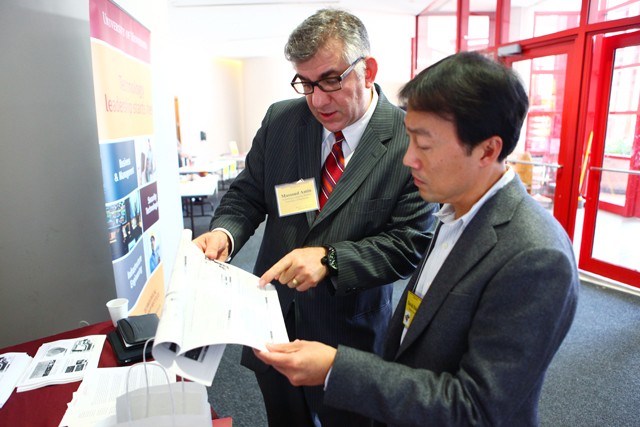Human operators control nearly every aspect of the U.S. electrical grid.
Computers canâÄôt keep up with the massive amounts of data that pour through a system designed last century, so operators huddled in control rooms at far-flung power plants call the shots.
“ItâÄôs a miracle it works,” said Laurie Miller, a University of Minnesota graduate research assistant working on power-grid technology. “IâÄôm perpetually amazed.”
Miller is working with Technological Leadership Institute Director Massoud Amin and his team, who want to make the grid more intelligent and automated âÄî a “smart self-healing grid” that would bring North America up-to-date with the world standards for energy
distribution.
A smart grid is the combination of computer, communication, sensing and control technologies that would be able to react to unforeseen events âÄî like power outages âÄî and minimize their impact, Amin said.
“It is the ability to know what is going on and what is coming,” Amin said.
The current North American power grid dates back to the 1900s and is the oldest in the world, Amin said.
“You have to call the electricity company to tell them that the power is out,” Anthony Giacomoni, fellow graduate research assistant said, showing how outdated the North American system is. “They wouldnâÄôt know otherwise.”
While there have been upgrades to the grid, including the addition of renewable fuels and limited automation, it has not been enough to keep up with the ever-increasing processing power needed to control an electricity grid, Miller said.
Analyzing data generated by the current system, each control room specialist has a “gut feel for his or her piece of turf,” Miller said. But, as she points out, many of these specialists are nearing retirement.
“Power system engineers, as a community, tend to be historically conservative,” Miller said. “They are hesitant about adopting new computer technology because they want to stick to what they know works because they will get in trouble if the lights go out.”
While human grid operators may possess a “certain intuition,” they cannot match the ability of a smart grid. Minutes can pass in an outage before an operator can analyze data and make a decision, while a smart grid could make a decision in milliseconds, Giacomoni said.
The number of power outages and the number of people affected has increased in the past decade, according to Amin.
Between 2001 and 2005, 197 power outages that affected 50,000 or more people were recorded. From 2006 to May 2010, that number rose to 312 outages.
Amin predicts a complete overhaul of the current system and implementing the smart grids would save the United States about $49 billion a year, as well as reduce emissions by up to 18 percent.
Power outages and power quality disturbances cost the U.S. economy more than $18 billion annually, Amin said. “We have to find a science- and data-based solution to help improve the situation and improve the conditions of the infrastructure.”
The energy consulting firm Brattle Group predicted the cost of the new system would be nearly $1.5 trillion over 20 years. AminâÄôs research, however, indicates an investment of $150 billion over 10 years will be sufficient.
While the idea of reducing emissions and providing electricity at a lower cost is a good incentive to support the implementation, opponents to the system are quick to point out security issues.
Giacomoni said an increased threat of cyber attacks is one concern of opponents.
“In an âÄòeverything is connectedâÄô world, everything must be looked at with security in mind,” cyber security consultant Joe Weiss said in a statement to the White House.
A solution to the security of the smart grid would be the next big step in the system implementation, Giacomoni said.
The current system is more susceptible to physical attacks.
The Northeast Blackout of 2003 that affected more than 55 million people in the U.S. and Canada, for example, was caused by a tree branch in Ohio.
The technology-based system will be less vulnerable to physical attacks but more susceptible to cyber attacks such as hacking, Giacomoni said.
“It took over 10 years of [Dr. Amin] trying to get people to listen until President Obama made the term [smart grid] famous,” Miller said. “All of a sudden we can get people to listen to us.”
Amin, who coined the smart-grid term 13 years ago, knows the impact of electricity first hand.
“Life would transform because of electricity,” said Admin, who, as a child, saw villages in rural Iran transform when electricity was introduced.
“I had seen villages without electricity and how life was so difficult,” Amin said. “In developed parts of the world, we take electricity for granted, but it is the lifeblood of our economy.”

















